Right now, feral deer are on the march in Tasmania. Numbering around 100,000 strong, they are spreading into the Wilderness World Heritage Area, putting its globally significant values at risk.
Researchers warn that under current management approaches, Tasmania could be overrun by more than one million feral deer by 2050 — an unimaginable biomass, far exceeding that of any native mammal species.
Fighting to stop the destructive impacts of big invasive animals across Australia is among our top priorities.
We are doing it in Tasmania, where we are campaigning for a strategy that will protect Tasmanian wilderness and farmers from feral deer, and we are doing it in Kosciuszko National Park, where feral horses have been allowed to build up unrestrained.
And Tasmania urgently needs our attention: hard-hoofed feral deer trample precious cushion plants and eat out native vegetation like endangered cider gums. They compete for food and destroy the habitat of small ground-nesting birds and other small animals like pademelons, bettongs, potoroos and quolls.
In February 2022, the Tasmanian Government released its management plan for fallow deer. Although the plan acknowledges that hunting alone cannot reduce feral deer numbers, disappointingly, it continues to protect feral deer for recreational hunters. It is outrageous that to manage feral deer on their own properties, farmers will continue to have to engage hunting groups and seek permits that constrain effective management.
Most disturbingly, the plan sanctions the presence of feral deer in parts of the Tasmanian Wilderness World Heritage Area along with Ben Lomond and Douglas-Apsley national parks. This is the opposite of what is needed to save these areas.
Whether or not you live in Tasmania, we should all take pride in its wilderness as an area of universal value to humankind. This is why we urgently need your help to allow us to continue to work to ensure Australia hears of the reckless path the Tasmanian Government is pursuing, so we can begin to encourage the state government to change tack.
Please donate today, every dollar will help make a difference.






